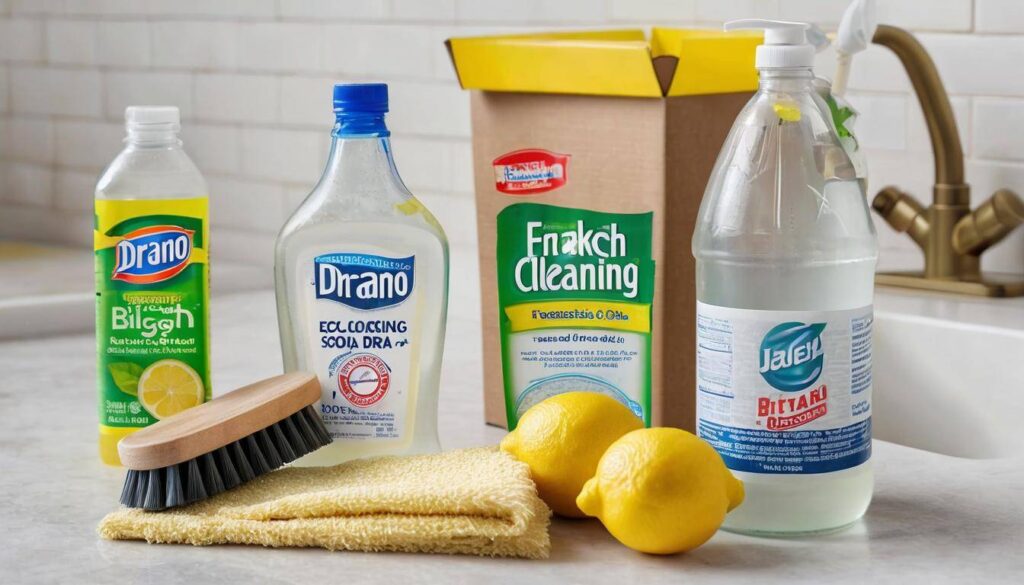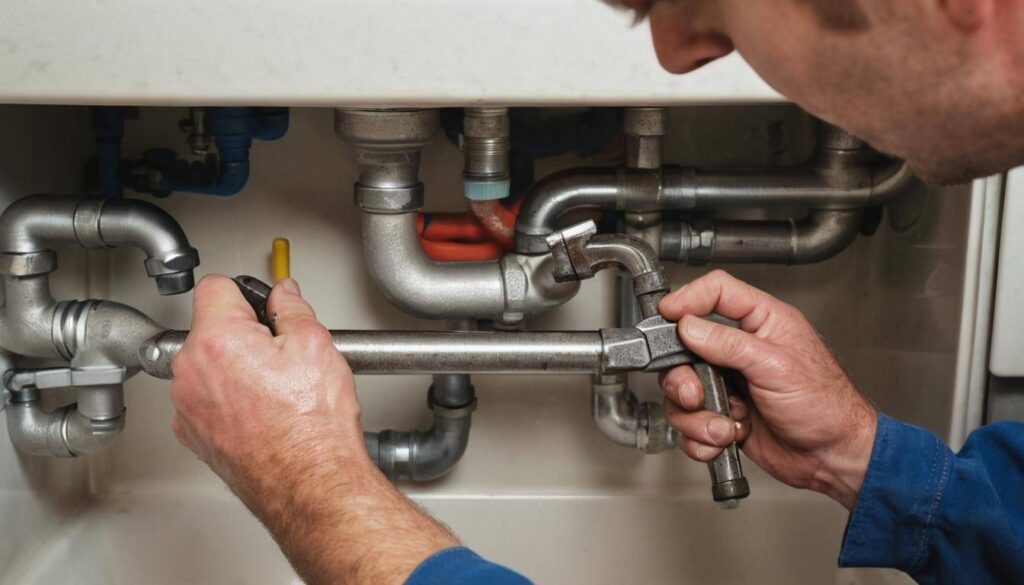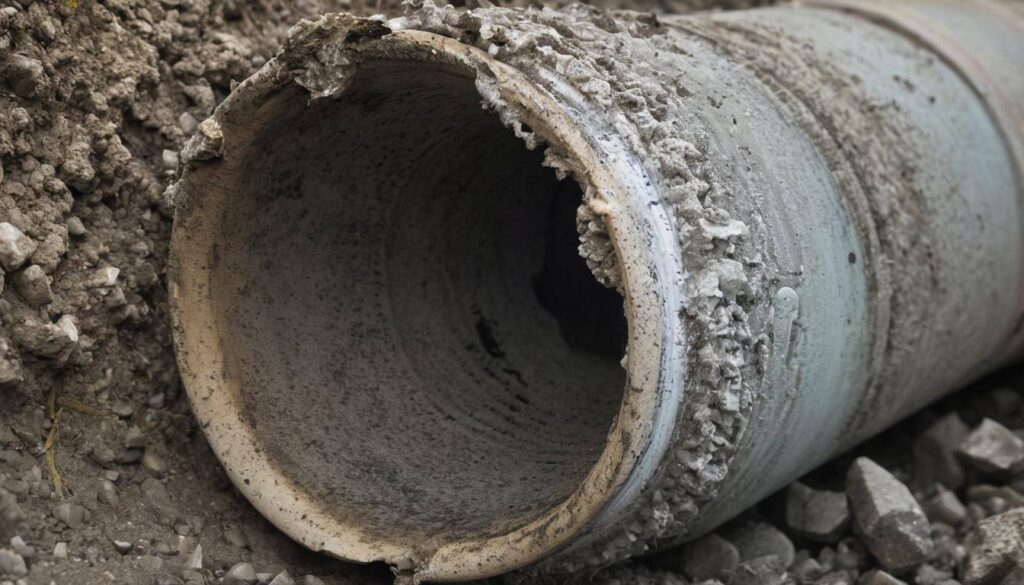Essential Tankless Water Heater Maintenance Tips for Better Efficiency and Longer Lifespan
Caring for your tankless water heater is simpler than you might think. Regular cleaning is a key factor that contributes to the improved efficiency and longevity of the unit. But here’s something you may not have considered; before diving into any maintenance routine, safety comes first- switching off the power of your water heater, can prevent unwanted happenings. Now, let’s look at the steps involved.
Regularly flushing your tankless water heater to remove mineral buildup and ensuring proper ventilation around the unit are crucial maintenance tips. Additionally, scheduling annual professional inspections can help identify any potential issues early on.
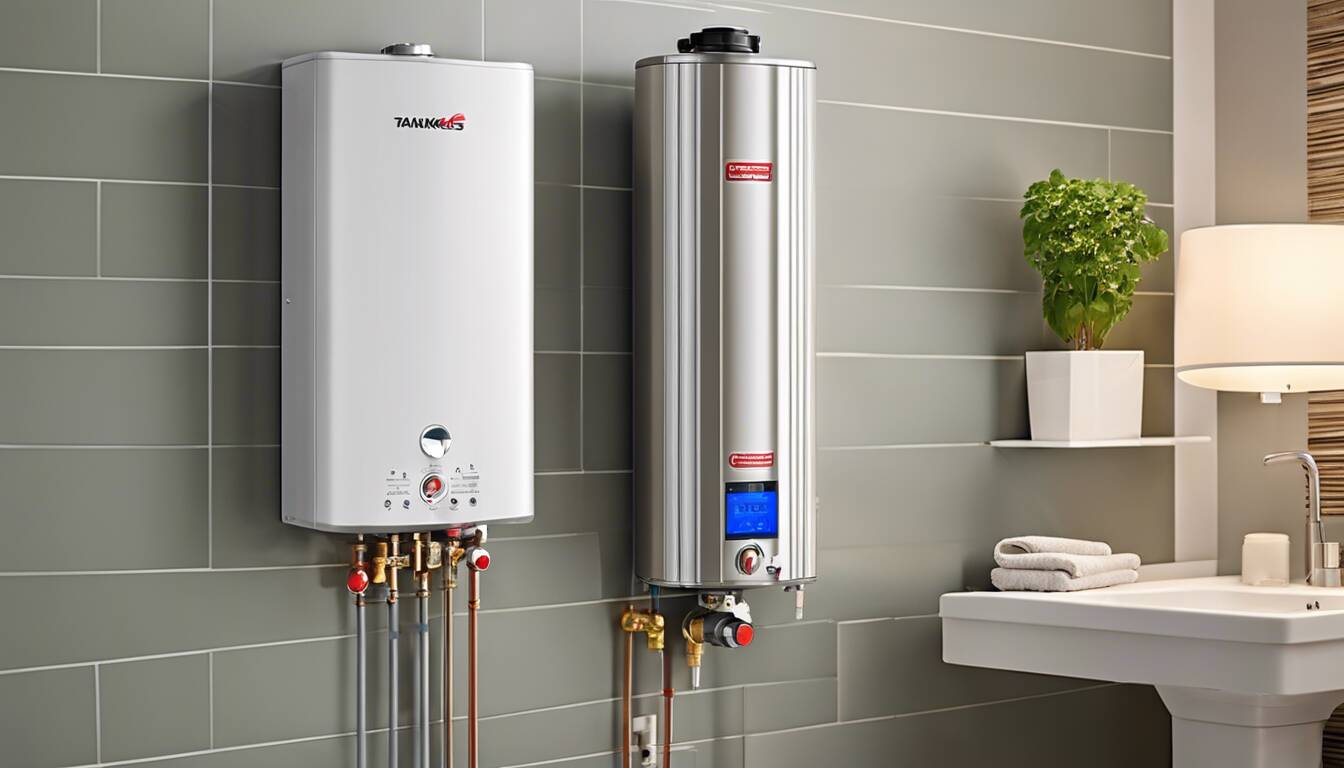
Cleaning Your Tankless Water Heater
Regular cleaning is like giving your tankless water heater a spa day. It helps to remove all the gunk and build-up that can slow it down and make it work harder than necessary. By following these simple steps, you’ll be able to keep your heater running at its best, just like when it was new!
Turn Off the Power
Before any maintenance work begins, ensure that the power to your water heater is turned off. Safety always comes first, and this step ensures you can work on the system without accidents or mishaps, keeping both you and your water heater safe during the cleaning process.
Flush the System
Next, flushing out the system removes any accumulated scale and mineral deposits that might affect your water heater’s performance. Here’s how you can do it:
- Use a submersible pump and connect hoses to the hot and cold water valves on your tankless water heater.
- Fill a bucket with a vinegar solution and use the pump to circulate this through the system for about an hour.
- The solution breaks down any scale and mineral deposits in the heat exchanger and internal components, flushing them out through the drain hose.
Flushes are like a deep clean for your water heater, removing anything that might be slowing it down or causing damage over time, which can be very costly.
Clean the Filter
Your tankless water heater has an inlet filter that stops debris from entering. Over time, this filter can get clogged with dirt and other contaminants, so it’s important to clean it regularly:
- Turn off the water supply to the unit.
- Remove the inlet filter using a screwdriver or by hand, depending on how it’s installed.
- Rinse off any dirt or debris that has accumulated on the filter.
- Ensure there are no blockages that could hinder water flow into the unit.
A clean filter is essential for maintaining good water flow and preventing potential damage from debris entering the system. Think of it as cleaning out the lint trap in your dryer—nobody wants a fire!
By performing these simple yet crucial maintenance tasks regularly, you can ensure that your tankless water heater keeps providing you with efficient and dependable hot water for years to come. It’s a little bit of effort now for long-term benefits!
In maintaining proper functionality of your tankless water heater, knowing how to perform routine maintenance is key. Let’s now explore some effective strategies for optimizing its efficiency and minimizing potential issues.
Routine Maintenance for Better Efficiency
Imagine if your tankless water heater was a car. You wouldn’t expect your car to run perfectly without regular oil changes, right? The same goes for your tankless water heater – it needs attention too, as simple maintenance tasks can help it work better and last longer.
Here are a few important tasks to perform to keep your tankless water heater in top shape:
Check for Leaks
Inspect the unit for any leaks to catch potential problems before they turn into bigger issues. This should be done routinely, especially around the connections and fittings. Even a small leak can cause significant damage over time if left unattended, so it’s important to address any signs of leakage promptly.
Monitor Water Pressure
Ensure that the water pressure remains within the recommended range specified by the manufacturer. High water pressure can strain the internal components and lead to premature wear and tear. On the other hand, low water pressure may indicate an underlying issue with the plumbing system that needs to be addressed.
Inspect Venting System
The venting system plays a critical role in maintaining proper airflow and combustion. Keep the venting system clear of any obstructions, such as debris or blockages, to ensure efficient operation. Regular inspections can help prevent issues related to inadequate ventilation, which can impact the performance and safety of the unit.
By incorporating these routine maintenance tasks into your home maintenance schedule, you can effectively enhance the efficiency of your tankless water heater and safeguard its longevity. Just like tending to your car’s needs helps it perform reliably, taking care of your tankless water heater ensures a consistent supply of hot water when you need it most.
Techniques to Extend Water Heater Lifespan
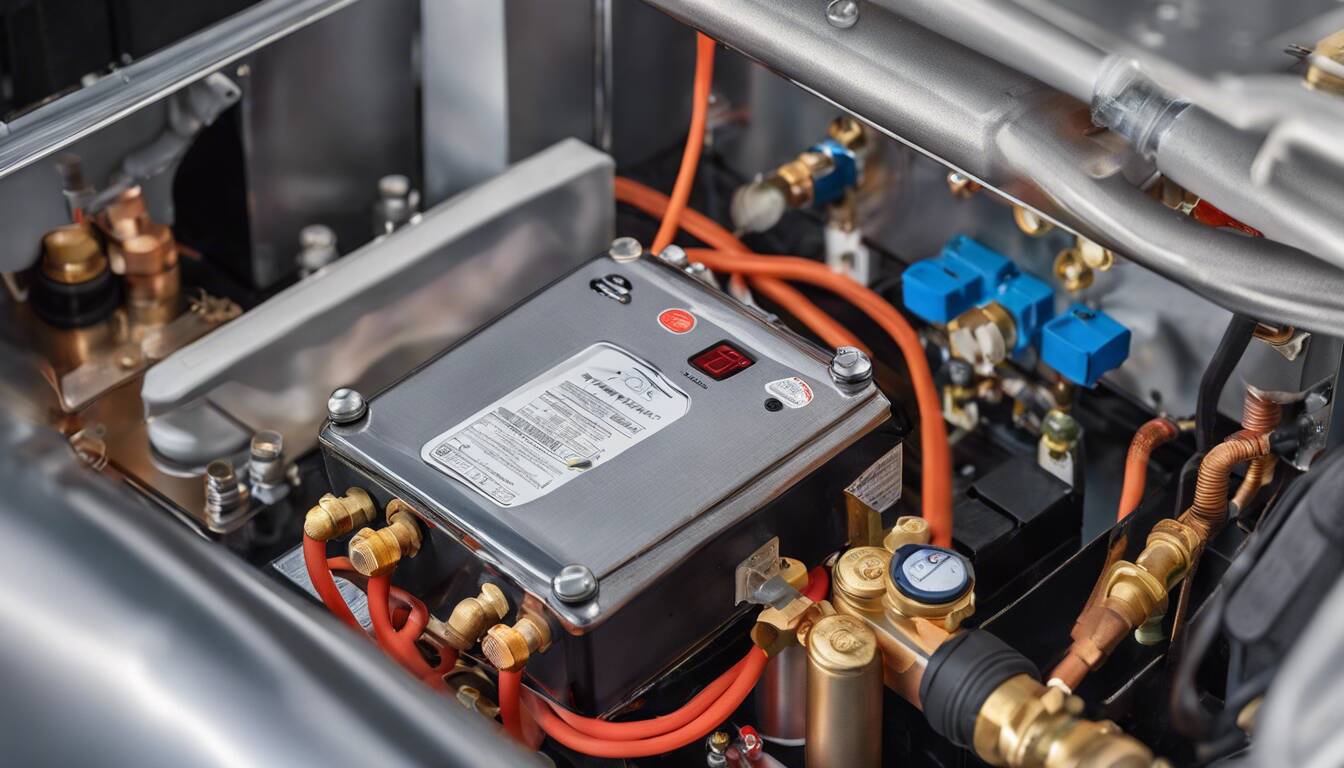
Your tankless water heater is more than just an appliance; it’s an investment in the comfort and functionality of your home. To ensure it continues providing reliable hot water for years to come, there are several essential techniques you can implement to extend its lifespan.
Schedule Regular Professional Inspections and Maintenance
One of the most crucial aspects of ensuring a long lifespan for your tankless water heater is to engage a professional plumbing service for annual inspections and tune-ups. These regular check-ups serve as a proactive measure to identify any potential issues before they escalate into costly problems. A skilled technician can detect issues such as mineral buildup, corrosion, or leaks, and address them promptly. By catching these problems early, you can avoid major malfunctions that could lead to the premature replacement of your water heater.
Consider Water Softening
Water hardness can pose a significant threat to the longevity of your tankless water heater. If you reside in an area with hard water, where high mineral content is present, consider installing a water softener. Hard water contains minerals such as calcium and magnesium, which can accumulate within the internal components of the water heater, leading to reduced efficiency and potential damage over time. A water softener works to reduce mineral buildup, thus safeguarding your tankless water heater from the detrimental effects of hard water.
Ensure Proper Ventilation
Proper ventilation is paramount for the efficient operation and prolonged lifespan of a tankless water heater. The unit requires ample airflow to facilitate its cooling process and prevent overheating. It’s essential to ensure that the area surrounding the water heater is well-ventilated, free from obstructions that could impede airflow. Overheating can not only diminish the performance of the unit but also significantly impact its durability. By maintaining proper ventilation, you contribute to the optimal functioning and longevity of your tankless water heater.
Taking proactive measures to maintain your tankless water heater pays dividends in terms of efficiency and longevity. Now, let’s explore strategies for preventing scale and sediment build-up that can compromise the performance of this essential home appliance.
Preventing Scale and Sediment Build-up
Scale and sediment build-up in a tankless water heater can significantly affect its efficiency, leading to increased energy consumption and potential damage to the internal components. To prevent or mitigate this common issue, here are some effective measures to take:
Install a Water Softener
One of the most proactive steps you can take to prevent scale and sediment build-up in your tankless water heater is to install a water softener. Hard water contains high levels of minerals like calcium and magnesium, notorious for causing scale accumulation. A water softener eliminates these minerals from the water, reducing the likelihood of scale formation in your water heater. By incorporating a water softener into your plumbing system, you’re safeguarding not only your tankless water heater but also other fixtures and appliances in your home, such as faucets, showerheads, and dishwashers, from the damaging effects of hard water.
Flushing the System
Regularly flushing your tankless water heater system is an essential maintenance practice that helps remove any accumulated scale and sediment. Mineral deposits can form inside the heat exchanger and other components over time, diminishing their performance and potentially causing malfunctions. Flushing involves purging the system with clean water to dislodge and expel any lingering scale or sediment. This simple yet crucial task promotes optimal heat transfer within the unit, ensuring it operates at peak efficiency. It’s recommended to follow the manufacturer’s guidelines for flushing intervals and procedures to maintain the effectiveness of this maintenance activity.
For example:
- Turn off the power supply to the water heater.
- Close both the hot and cold-water isolation valves.
- Connect a hose to the service valves on the unit.
- Open one valve to flush with vinegar or a dedicated descaling solution.
- After flushing, close the service valve and disconnect the hose before restoring power and reopening the isolation valves.
By taking these preventive measures, you can effectively combat scale and sediment build-up in your tankless water heater, ensuring its sustained efficiency and longevity.
Now equipped with essential maintenance practices for your tankless water heater’s efficiency and longevity, let’s move on to exploring ways to address common problems that may arise in using these systems.
Solving Common Tankless Heater Problems
It’s not unusual to face issues with tankless water heaters, but the good news is that most of the problems are solvable. One of the most frustrating issues people encounter is fluctuating water temperature. You might be enjoying a hot shower one moment, and the next, you’re shivering under a sudden rush of cold water.
The key here is to check the temperature settings on your heater. Occasionally, these settings can be accidentally changed, leading to unexpected temperature changes. Also, take a look at the water flow. Any blockages or obstructions in the flow can disrupt the consistency of the water temperature. It’s always important to maintain a clear and uninterrupted water flow.
Another common problem is ignition failure. When you try to turn on the heater, but it just won’t light up. This might be due to an issue with the gas supply, so ensure that it is uninterrupted. Additionally, dirt and debris can build up over time and create obstacles for the igniter and burner, preventing them from working properly. Regularly cleaning these components prevents buildup and ensures efficient ignition.
Have you ever seen error codes pop up on your tankless water heater’s display? These pesky codes can be quite confusing, but they often indicate specific issues with the unit. The best way to approach this is by referring to the user manual; it usually contains a list of error codes along with instructions for troubleshooting. If you can’t find a solution in the manual, contacting a professional is advisable as they will diagnose and resolve any complex issues efficiently.
Dealing with these common problems can seem daunting, but with some simple adjustments and regular maintenance, you can keep your tankless water heater running smoothly for years to come. Navigating your way through potential tankless water heater issues isn’t always a walk in the park. Now, let’s turn our attention to measures you can implement to ensure safety when using and maintaining your water heater.
Water Heater Safety Precautions
Tankless water heaters provide efficient and reliable hot water, but it’s crucial to ensure their safe operation. By taking specific precautions, you can maximize the performance of your unit while minimizing safety risks.
Proper Ventilation
One of the most important safety measures for a tankless water heater is ensuring proper ventilation. The unit’s venting system should remain unobstructed to allow for the safe expulsion of combustion gases. Failure to maintain clear ventilation can lead to the build-up of harmful gases such as carbon monoxide, posing serious health risks to you and your family. Regularly inspect the venting system to remove any blockages or debris that could impede the flow of gases, keeping your home safe and secure from potential hazards.
Gas Leak Detection
Another critical aspect of maintaining water heater safety is regularly inspecting the gas connections and fittings for any signs of leaks. Even a minor gas leak can pose a significant threat to the safety of your home. Using a gas leak detector or soapy water, carefully check all connections and fittings for potential leaks, ensuring that any issues are promptly addressed by a qualified professional. This proactive approach can prevent hazardous situations and guarantee the safe operation of your tankless water heater.
Temperature and Pressure Relief Valve
Regular testing of the temperature and pressure relief valve is essential to ensure its proper functioning. This valve serves a vital role in releasing excess pressure within the unit, preventing overheating and potential damage. Annually testing this valve will help you identify any malfunctions early on, allowing for timely repairs or replacements as needed. By prioritizing this precautionary measure, you can safeguard your home against potential hazards associated with pressure buildup in your water heating system.
Prioritizing these safety precautions not only promotes the reliable and efficient operation of your tankless water heater but also safeguards your home and family from potential risks. Remember, proactive maintenance and adherence to safety protocols are key to maximizing the lifespan of your unit and ensuring uninterrupted access to hot water when you need it most.
By following these safety measures, you are actively contributing to a secure and well-maintained home environment, providing peace of mind as you enjoy the benefits of your tankless water heater’s convenience and energy efficiency.
Take the necessary steps to ensure the safety and longevity of your tankless water heater by following these essential maintenance procedures. Learn more by calling our expert at 587-707-0606.

